
This species is from the State of Rio de Janeiro in Brazil. GBIF has a record from Nova Friburgo, a municipality in the State of Rio de Janeiro. Neubig et al (2012) mentioned a report from near Caracas, Venezuela, which is far from Rio de Janeiro and may be an escape from cultivation.
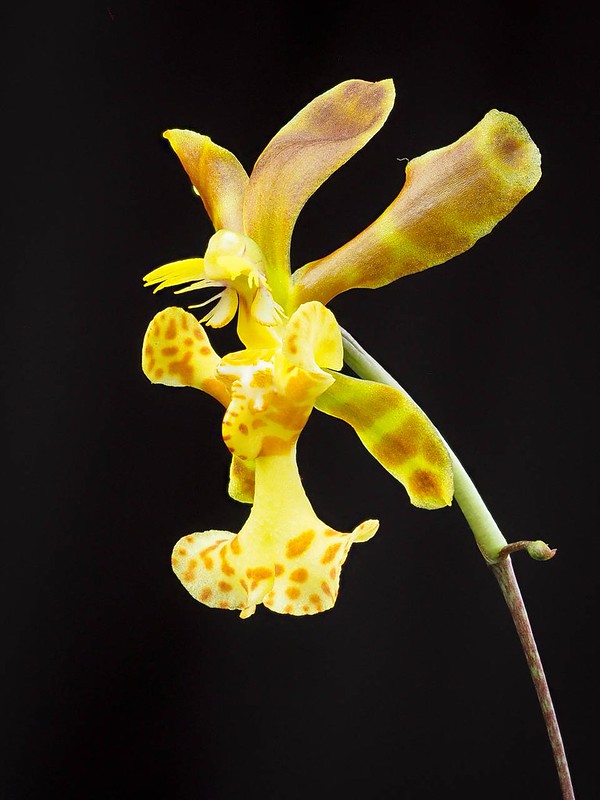
With the current knowledge, this species belonging to a monotypic genus (a genus with only one known species) is justified, but the relationship of this genus to others is not completely understood yet (in my interpretation of the data). This species was originally described as Oncidium limminghei in 1855. It was moved to a monotypic Psychopsiella in 1982. Subsequently, based on nuclear ITS sequences, Chase (2005) lumped this species into genus Psychopsis. This species does look like a miniture Psychopsis if you look at the patterned leaves, so this seemed to be logical. However, a later study with additional data (6 regions of chloroplast sequences; cpDNA) showed that Psychopsiella may be more closely related to Trichopilia than to Psychopsis if we reconstruct the phylogeny with only cpDNA (Neubig et al 2012). If this is the case, Psychopsiella should be maintained as a monotypic genus, and Chase and his colleagues reversed their position and accepted Psychopsiella as a valid genus. However, the nuclear ITS phylogeny is clearly contradicting with the phylogeny based on cpDNA. The contradiction among different gene genealogies is not weird, and a single gene genealogy does not necessarily represent the pattern of species diversification. This kind of contradictions are expected if these 3 genera diverged rapidly around the time. There are several methods to reconstruct the species tree from genealogies of several independent genes. Even though they sequenced 6 regions of the chloroplast genome, chloroplast genes are all linked, so they usually behave like a single locus. With 2 loci (ITS and the rest of cpDNA), we can't resolve which tree represents the real evolutionary pattern. So we need to see additional nuclear data to clearly determine whether Psychopsiella is closer to Psycopsis or Trichopilia. I had an impression that Neubig et al (2012) was favoring the hypothesis that the Trichopilia is the closest genus of Psychopsiella, but their logic was not well explained. But in either case, accepting the monotypic Psychopsiella would be the most stable solution. Interestingly, the number of chromosomes are 2n=38 for Psychopsis and 2n=56 for Psychopsiella and Trichopilia. This pattern of chromosome numbers can be achieved even if Psychopsiella and Psychopsis is the closest relatives; the ancestor of 3 genera had 2n=56, and the chromosome number reduced in Psychopsis after it got split from Pychopsiella. However, reduction in chromosome number are evolutionarily harder than increase in chromosome numbers (polyploidization). So this data does give a slight support that Psychopsiella is closer to Trichopilia.
With many species related to Oncidium, the lip is the most interesting part of the flower. Especially, if you look the structure with magnifying glasses, you start to see the interesting shapes. There are several calluses on the lip, and I wonder what their function would be during the pollination. Additionally, with this species, I thought the frilly appendage around the column is spectacular (see the first photo of this post).
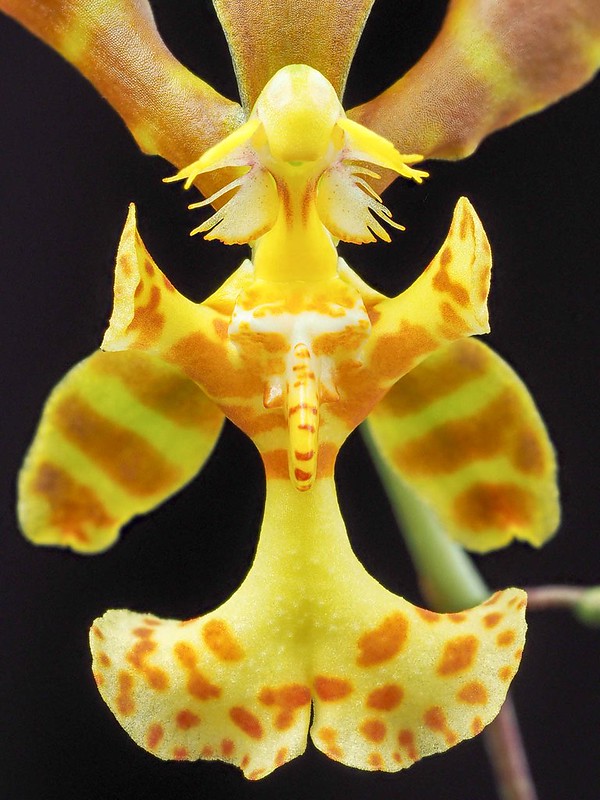

The growth habit is very interesting, too. The leaves and pseudobulbs develop very close to the mount. It doesn't produce a lot of roots, and the roots are well tucked under the leaves. The texture of the leaves, which nice red mottling pattern, are rough, and the leaf seems to have thick surface cells to reduce water loss. These structures reminds me of adaptation to arid climate. The coverage by leaf might create a humid micro-climate under the leaves. The stomata are likely to be more dense (I haven't checked) under the leaf, so this micro-climate could reduce water loss due to transpiration. Also it may help retaining moisture around the root area after rain. Rio de Janeiro has a tropical savanna to monsoon climate, so they get fair amount of precipitation. There is a reduced precipitation period in the winter, but it is far from arid. Although I couldn't find the habitat information, if they live in exposed area, possibly high in canopy, their adaptation to aridness may be useful.
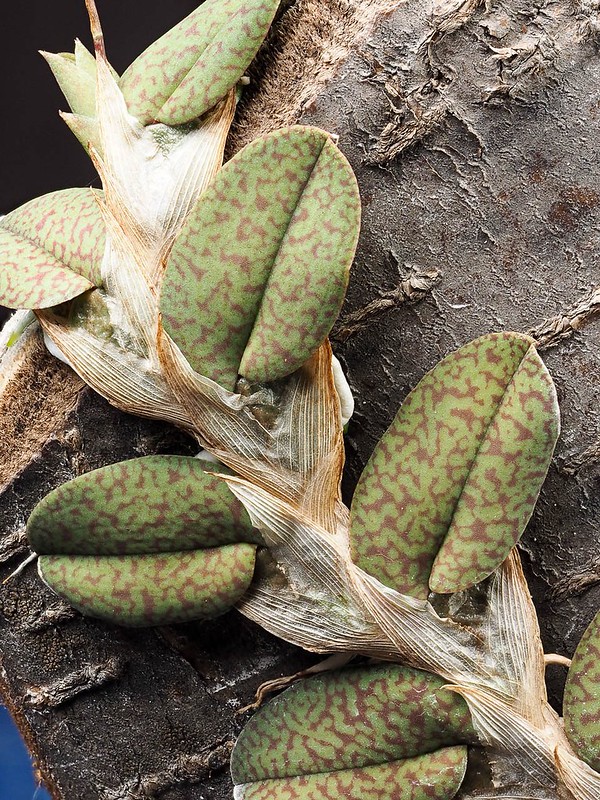
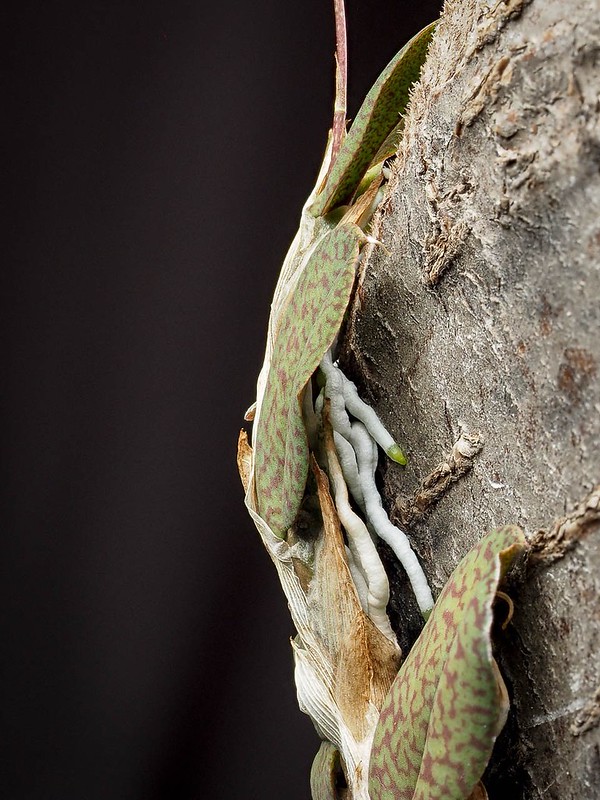
I obtained this plant from Florália. I have been keeping it warm year around; min/max temperature of 18/30C (65/86F). It is receiving fairly strong light (PPFD of 240 µmol m-2 s-1, Cattleya-level). It is mounted without any sphagnum mosses, so it dries out within a couple hours. I water it every other day with 30ppmN fertilizer. It's been a quick grower, and doubled in the size in 1.5 years (the pseudobulbs without leaves + 1-2 leaves on the right side were the original). I'm not sure about the elevation range, but this warm condition seems to be ok with this species. Baker and Baker has a free culture sheet for this species (link).
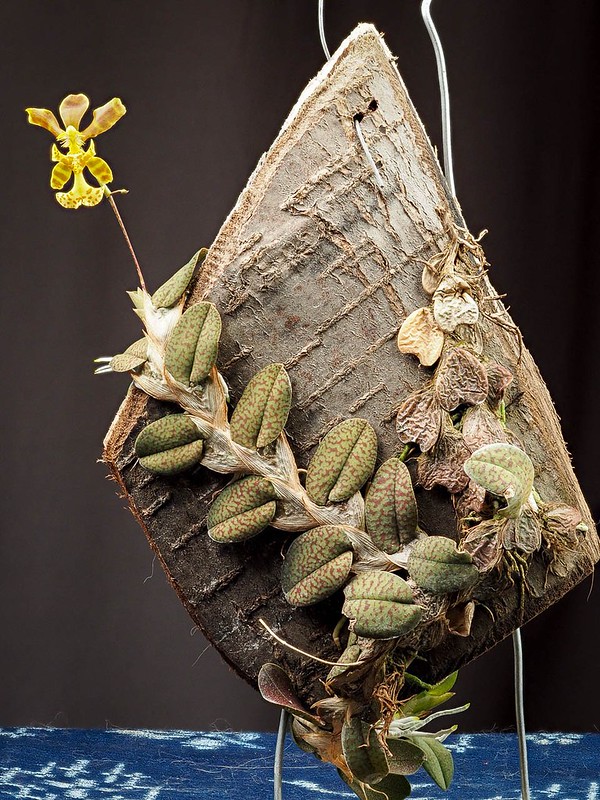
Literature Cited:
- Neubig, K.M., Whitten, W.M., Williams, N.H., Blanco, M.A., Endara, L., Burleigh, J.G., Silvera, K., Cushman, J.C. and Chase, M.W., 2012. Generic recircumscriptions of Oncidiinae (Orchidaceae: Cymbidieae) based on maximum likelihood analysis of combined DNA datasets. Botanical Journal of the Linnean Society, 168(2): 117-146. (link to full text)
- Chase, M.W., 2005. 520. Psychopsis limminghei. Curtis's Botanical Magazine, 22(1): 53-55.

I love the way you can make complex, technical topics simple to understand for those of us without a degree in botany :-) You make your plants come alive. Thanks again for a great post!
ReplyDeleteThank you for a kind comment, again!
Delete